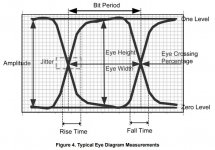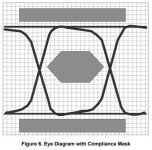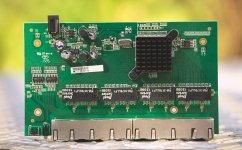Hello All,
I don't know if it is the right spot to post this thread. Also did some research on the forum and didn't find a topic about this subject.
To moderators, please move if not appropriate location.
My streaming data go from my NAS to my Streamer through ethernet connection. I have a Dlink DGS105 "ala Swenson" (meaning on LPS + the ground to the chassis). This tweak improved the background noise and the general resititution of my system (Dali Opticon 8 speakers/Audiomat amp/Soekris dam 1021/ Mano streamer/NAS with LMS).
I have recently tested on my system the AQVox SE ethernet switch in replacement of the Dlink. The effect is just spectacular! Awesome! This is not a small improvement, it is real and well perceived.
This is not a small improvement, it is real and well perceived.
The sound stage is more defined, instruments well separated and the general restitution is less stressed. (more analog restitution). The same day, we tested it on THDG system (full TotalDac) and the effect was also well perceived.
Brands like AQVOX, Waversa, SOTM, the linear solution, Paul Pang propose different product to improve the ethernet data right before the streamer. The issue is that those are as expensive (or even more) as streamers....
Here is a picture of the AQVOX inside
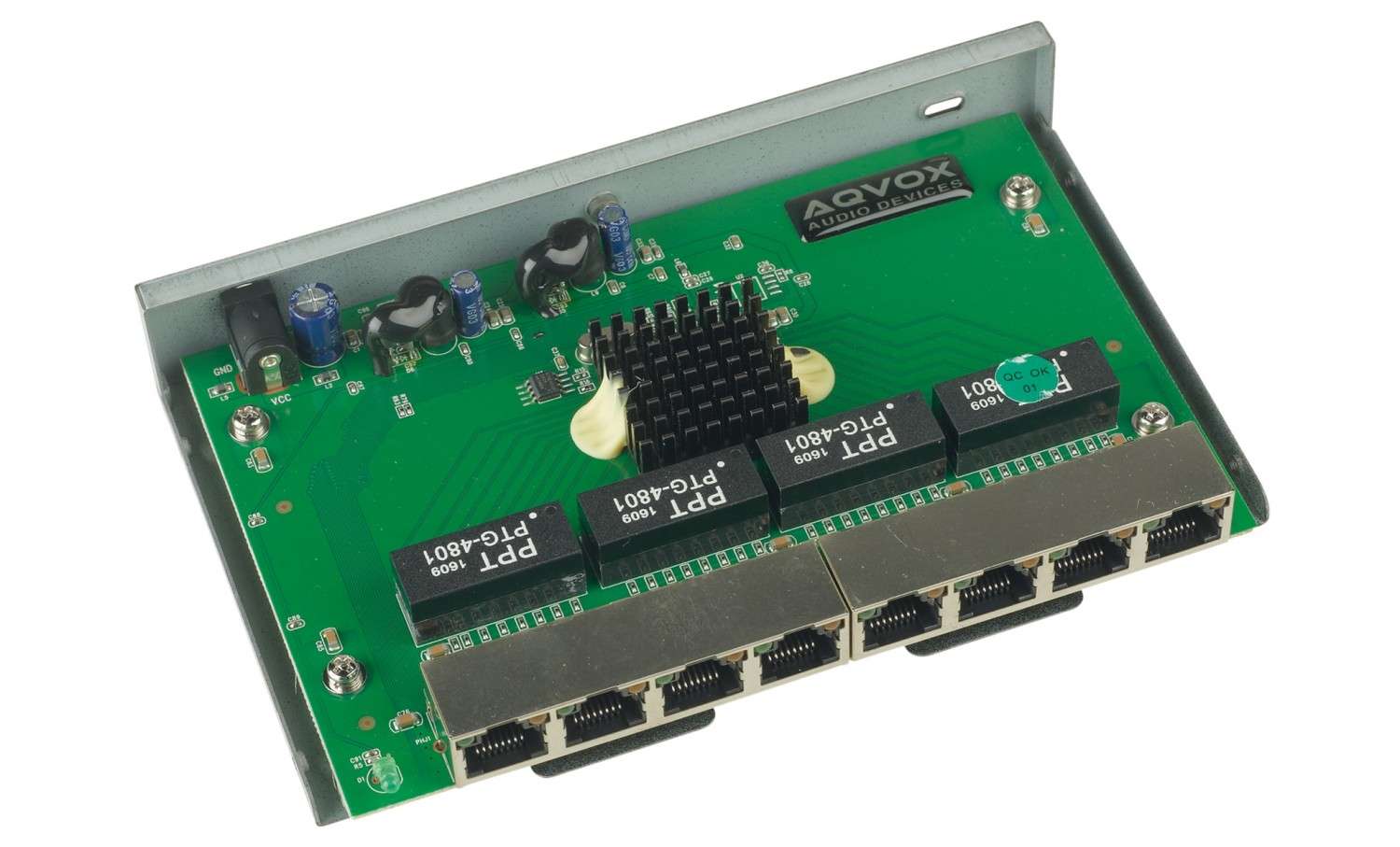
I'm looking for information in order to tweak a regular switch (like did Paul Pang, AQVOX) but in DIY manner. The only subject I found is this one: Guney's Place
Seems like their is a general consensus to upgrade the capacitors of the switch, but what about the clock, the internal power supply, regulators,...
Did anybody work on this topic? Anyone knowing where to find a tutorial to upgrade ethernet switches?
Thanks for your feedback
I don't know if it is the right spot to post this thread. Also did some research on the forum and didn't find a topic about this subject.
To moderators, please move if not appropriate location.
My streaming data go from my NAS to my Streamer through ethernet connection. I have a Dlink DGS105 "ala Swenson" (meaning on LPS + the ground to the chassis). This tweak improved the background noise and the general resititution of my system (Dali Opticon 8 speakers/Audiomat amp/Soekris dam 1021/ Mano streamer/NAS with LMS).
I have recently tested on my system the AQVox SE ethernet switch in replacement of the Dlink. The effect is just spectacular! Awesome!
 This is not a small improvement, it is real and well perceived.
This is not a small improvement, it is real and well perceived.The sound stage is more defined, instruments well separated and the general restitution is less stressed. (more analog restitution). The same day, we tested it on THDG system (full TotalDac) and the effect was also well perceived.
Brands like AQVOX, Waversa, SOTM, the linear solution, Paul Pang propose different product to improve the ethernet data right before the streamer. The issue is that those are as expensive (or even more) as streamers....
Here is a picture of the AQVOX inside

I'm looking for information in order to tweak a regular switch (like did Paul Pang, AQVOX) but in DIY manner. The only subject I found is this one: Guney's Place
Seems like their is a general consensus to upgrade the capacitors of the switch, but what about the clock, the internal power supply, regulators,...
Did anybody work on this topic? Anyone knowing where to find a tutorial to upgrade ethernet switches?
Thanks for your feedback
Thanks for the pic. The inside looks very standard and certainly not bristling with audiophile parts. My guess is they probably listened through a pile of cheap switches and selected what sounded best. There is of course a chance the firmware has been tweaked.
A LPS and decent ethernet wire made a huge difference in my case. It is probably desirable to also have only essential audio stuff plugged in.
But seeing how cheap switches are, there is just no excuse not to try tweaking one: clock, caps, chokes, shielding.
Nice thread. Keeping fingers crossed the trolls won't find it
A LPS and decent ethernet wire made a huge difference in my case. It is probably desirable to also have only essential audio stuff plugged in.
But seeing how cheap switches are, there is just no excuse not to try tweaking one: clock, caps, chokes, shielding.
Nice thread. Keeping fingers crossed the trolls won't find it
Improve Ethernet data? 
The data is transmitted to the streamer by the TCP protocol... not morse code. If a package (chunk of data) is corrupt, missing or received in the wrong order, it is resent or just arranged in the right order.
Every single packet is recieved by the buffer in the streaming device BIT PERFECT!
How can you possible improve a perfect copy?
Just because streaming something over the internet can be lossy with distortion and blocky picture, does not mean its the same when streaming at home.
These transmission protocols are using UDP not TCP.
And even if that switch is used for a multocast UDP stream with packet loss, how is it supposed to improve data that no longer exists?
Use $50.000 on cables and at least half that on other tweaks. Just dont waste money on things like that. You are making us all look incredible stupid.
If you are a HiFi enthusiast running media servers, streamers etc. this is one important part of if you want to learn. Learn how to DIY the right way.
What’s The Difference Between The OSI Seven-Layer Network Model And TCP/IP? | Electronic Design
Here is a more in depth article. Lots of other related stuff here worth a read:
What is OSI model (Open Systems Interconnection)? - Definition

The data is transmitted to the streamer by the TCP protocol... not morse code. If a package (chunk of data) is corrupt, missing or received in the wrong order, it is resent or just arranged in the right order.
Every single packet is recieved by the buffer in the streaming device BIT PERFECT!
How can you possible improve a perfect copy?
Just because streaming something over the internet can be lossy with distortion and blocky picture, does not mean its the same when streaming at home.
These transmission protocols are using UDP not TCP.
And even if that switch is used for a multocast UDP stream with packet loss, how is it supposed to improve data that no longer exists?
Use $50.000 on cables and at least half that on other tweaks. Just dont waste money on things like that. You are making us all look incredible stupid.
If you are a HiFi enthusiast running media servers, streamers etc. this is one important part of if you want to learn. Learn how to DIY the right way.
What’s The Difference Between The OSI Seven-Layer Network Model And TCP/IP? | Electronic Design
Here is a more in depth article. Lots of other related stuff here worth a read:
What is OSI model (Open Systems Interconnection)? - Definition
Ethernet provides no guarantee that a packet will be delivered at all, let alone when it will be delivered. People using Ethernet need to bear this in mind and employ big buffers at each end, thus taking data alone (and no timing at all) from Ethernet. However, if Ethernet delivers a packet you can be sure the data is uncorrupted as it uses a powerful error checksum. Hence a change in packet switch can only affect audio systems which are misusing Ethernet.
Ok, sorry for the translation of "improved data" please consider " unpolluted data through the ethernet"
Yes the data are all delivered as expected, no doubt. Then it can be delivered clean or polluted by electronics or switch mode power supply.
If you don't believe in it this is fine we have your opinion now. Just listen to this kind of switch and then you'll see who looks stupid.
The goal of the thread is to see how to tweak Ethernet switch, not to discuss if you believe it works or not. People who listened to the switch can argue, believer should listen to it before talking about it.
Yes the data are all delivered as expected, no doubt. Then it can be delivered clean or polluted by electronics or switch mode power supply.
If you don't believe in it this is fine we have your opinion now. Just listen to this kind of switch and then you'll see who looks stupid.
The goal of the thread is to see how to tweak Ethernet switch, not to discuss if you believe it works or not. People who listened to the switch can argue, believer should listen to it before talking about it.
Re: unpolluted data through the ethernet.
"Phase noise" and other perceived ills of digital data transmission means nothing as far as digital audio quality is concerned.
In digital data transmission, the measurement to determine transmission quality is called an eye diagram or eye pattern. Have a quick look on how to understand an eye pattern or diagram. This engineering application note is as good as any: https://www.onsemi.com/pub/Collateral/AND9075-D.PDF
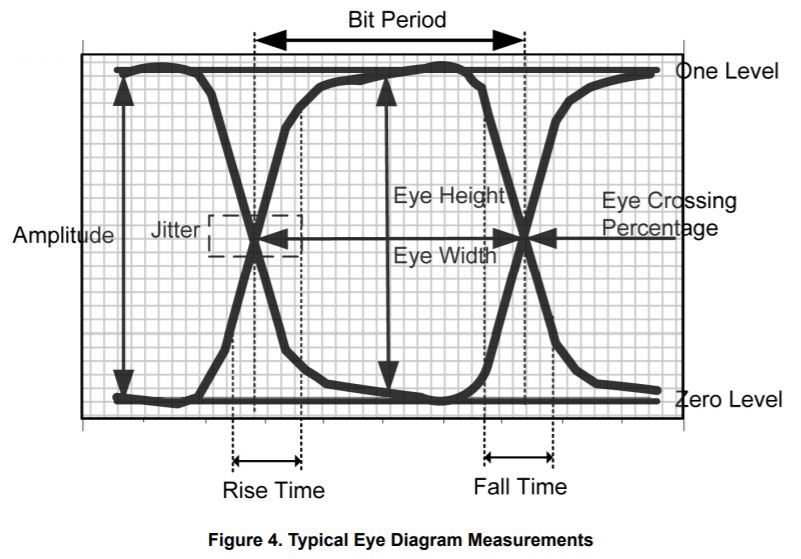
In high speed digital data transmission, as long as the bit error rate is down below spec and the data transmission stays out of the "keep out" region of the compliance mask (see below), then you are getting 100% perfect digital data transmission. Period.
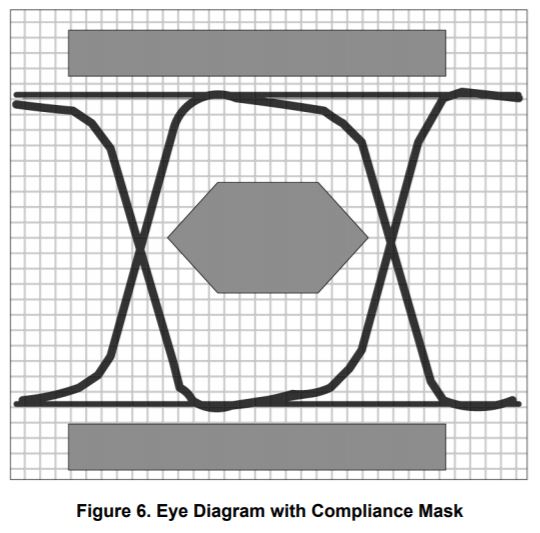
Source: Was a digital electronics tech way back in the early 80's fine tuning eye patterns for products like: US4534039B1 - Dataset powered by control and data signals from data terminal
- Google Patents
"Phase noise" and other perceived ills of digital data transmission means nothing as far as digital audio quality is concerned.
In digital data transmission, the measurement to determine transmission quality is called an eye diagram or eye pattern. Have a quick look on how to understand an eye pattern or diagram. This engineering application note is as good as any: https://www.onsemi.com/pub/Collateral/AND9075-D.PDF
In high speed digital data transmission, as long as the bit error rate is down below spec and the data transmission stays out of the "keep out" region of the compliance mask (see below), then you are getting 100% perfect digital data transmission. Period.
Source: Was a digital electronics tech way back in the early 80's fine tuning eye patterns for products like: US4534039B1 - Dataset powered by control and data signals from data terminal
- Google Patents
Attachments
I don't have listened to audiophile switches but I have heard claims like the one espressed by Faboz, and they may be true. I believe that there is a technical explanation, but it is completely different from the trivial and obviously wrong "data corruption" hypothesis. The bad news first: exchanging capacitors and clock crystals on the network switch will never work, but there is another way to make improvements.
First of all, on my experience, the audiophile network switch is always compared to a small consumer unmanaged layer 2 switch such as the one Faboz listed on the first post. Unless you have network test equipment and extensive first hand experience on network management, you cannot get an idea on how badly some of them work. A short list of typical issues I've found on real support tickets at work:
- Radio frequency interference from the cheaply built switched mode power supply brick that is so strong, that nearby Wi-Fi and radio communications are crippled. Imagine to have one of those "radio transmitters" plugged directly on your audio gear power strip.
- Bad link status management: the network speed mode and half/full duplex mode are wrongly negotiated to the devices plugged to the switch ports. This means that the speed is suboptimal or that there are very short (milliseconds) interruptions of the communications from time to time.
- Random resets of the switch: this is more typical of older (> 12 months) devices and probably due to bad filter capacitors/oxidized contacts on power supply connector/ bad solder joints on the PCB. The communication will interrupt briefly, sometimes so briefly that devices connected to the switch starts behaving erratically.
- packet switching errors, such as reverting to a hub-like behaviour on some circumstances: I believe that they are the effect of bugs on the firmware. Depending on the kind of network services and topology, this may go unnoticed or cause network performance degradation / packet loss. In any case, the devices connected to the switch ports are receiving an abnormal packet stream that may not have been tested by developers and may trigger software bugs or silently kick the device in a "slow network" mode with degraded performance.
My iphotesis on the way audiophile network switches works is simple. First, they have a good power supply that does not radiate electromagnetic interference. Second, the manufacturer leased a network analyzer for a few hours and selected from a stash of OEM commercial switch boards the one that does the least amount of bad behaviour. This very simple act is certainly enough to make a difference in any TCP/IP based computer network, and it should work even on network based audio gears. If my hypotesis is true, the best course of action would be to put aside the home switches and their audiophile customizations, and buy a professional grade network switch instead, designed and built by a company that does networking as core business such as Cisco, Juniper, and many others - just be sure to avoid the models with noisy fans that are meant to be installed in a network closet. Any switch of this kind does have an internal shielded power supply of excellent quality and it is designed by people that know their stuff. It may have features that aren't needed, but the important thing is that they are designed, built and tested to be compliant to all the standards.
First of all, on my experience, the audiophile network switch is always compared to a small consumer unmanaged layer 2 switch such as the one Faboz listed on the first post. Unless you have network test equipment and extensive first hand experience on network management, you cannot get an idea on how badly some of them work. A short list of typical issues I've found on real support tickets at work:
- Radio frequency interference from the cheaply built switched mode power supply brick that is so strong, that nearby Wi-Fi and radio communications are crippled. Imagine to have one of those "radio transmitters" plugged directly on your audio gear power strip.
- Bad link status management: the network speed mode and half/full duplex mode are wrongly negotiated to the devices plugged to the switch ports. This means that the speed is suboptimal or that there are very short (milliseconds) interruptions of the communications from time to time.
- Random resets of the switch: this is more typical of older (> 12 months) devices and probably due to bad filter capacitors/oxidized contacts on power supply connector/ bad solder joints on the PCB. The communication will interrupt briefly, sometimes so briefly that devices connected to the switch starts behaving erratically.
- packet switching errors, such as reverting to a hub-like behaviour on some circumstances: I believe that they are the effect of bugs on the firmware. Depending on the kind of network services and topology, this may go unnoticed or cause network performance degradation / packet loss. In any case, the devices connected to the switch ports are receiving an abnormal packet stream that may not have been tested by developers and may trigger software bugs or silently kick the device in a "slow network" mode with degraded performance.
My iphotesis on the way audiophile network switches works is simple. First, they have a good power supply that does not radiate electromagnetic interference. Second, the manufacturer leased a network analyzer for a few hours and selected from a stash of OEM commercial switch boards the one that does the least amount of bad behaviour. This very simple act is certainly enough to make a difference in any TCP/IP based computer network, and it should work even on network based audio gears. If my hypotesis is true, the best course of action would be to put aside the home switches and their audiophile customizations, and buy a professional grade network switch instead, designed and built by a company that does networking as core business such as Cisco, Juniper, and many others - just be sure to avoid the models with noisy fans that are meant to be installed in a network closet. Any switch of this kind does have an internal shielded power supply of excellent quality and it is designed by people that know their stuff. It may have features that aren't needed, but the important thing is that they are designed, built and tested to be compliant to all the standards.
Last edited:
Ethernet data is always delivered clean i.e. unpolluted by data errors. The timing doesn't matter; if it causes problems then your buffers are too small. Now you may be saying that this switch somehow reduces ground loops or other electrical problems which may affect the recipient of that clean uncorrupted Ethernet data, but it certainly does not improve the data in any way.Faboz said:Yes the data are all delivered as expected, no doubt. Then it can be delivered clean or polluted by electronics or switch mode power supply.
If my hypotesis is true
There is no evidence that any of the "audiophile" switches have been built this way. Not saying your idea will bring no positive results, just that manufacturers don't seem to use it.
The switch discussed in this thread is a dirt cheap modified D-link, not certain of the exact model, but quite certain that Aqvox do not modify the firmware but only do superficial improvements to on-board PS filtering and regulation.
Now you may be saying that this switch somehow reduces ground loops or other electrical problems which may affect the recipient of that clean uncorrupted Ethernet data, but it certainly does not improve the data in any way.
Correct!
I haven't tried but just adding any ok linear supply would be of benefit compared to plugpack smps I expect.I have recently tested on my system the AQVox SE ethernet switch in replacement of the Dlink. The effect is just spectacular! Awesome!This is not a small improvement, it is real and well perceived.
The sound stage is more defined, instruments well separated and the general restitution is less stressed. (more analog restitution). The same day, we tested it on THDG system (full TotalDac) and the effect was also well perceived.
Brands like AQVOX, Waversa, SOTM, the linear solution, Paul Pang propose different product to improve the ethernet data right before the streamer. The issue is that those are as expensive (or even more) as streamers....
Seems like their is a general consensus to upgrade the capacitors of the switch, but what about the clock, the internal power supply, regulators,...
Did anybody work on this topic? Anyone knowing where to find a tutorial to upgrade ethernet switches?
Even better if you can incorporate all into a shielded box like the audiophile quality ethernet switch project you posted.
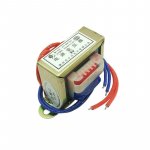
These cheap Double Insulated transformers (Ebay) are lower leakage capacitance to ground than torroidal and can be bonded to earthed metal chassis/case plus an Ebay regulator pcb and you are good to go.
???.Thanks for the pic. The inside looks very standard and certainly not bristling with audiophile parts. My guess is they probably listened through a pile of cheap switches and selected what sounded best. There is of course a chance the firmware has been tweaked.
What do you call 'decent ethernet wire'....Office Works no good ?.A LPS and decent ethernet wire made a huge difference in my case. It is probably desirable to also have only essential audio stuff plugged in.
But seeing how cheap switches are, there is just no excuse not to try tweaking one: clock, caps, chokes, shielding.
The first tweak to implement in digital gear IME/IMO is to ground the case of the crystal to nearest ground and ensure to use lead-free solder.
Too late, there is already a bunch of posts explaining that you and the OP are delusional because 'digital is digital', oh well.Nice thread. Keeping fingers crossed the trolls won't find it
Dan.
Last edited:
- Status
- Not open for further replies.
- Home
- Source & Line
- Digital Source
- Audiophile Ethernet Switch
